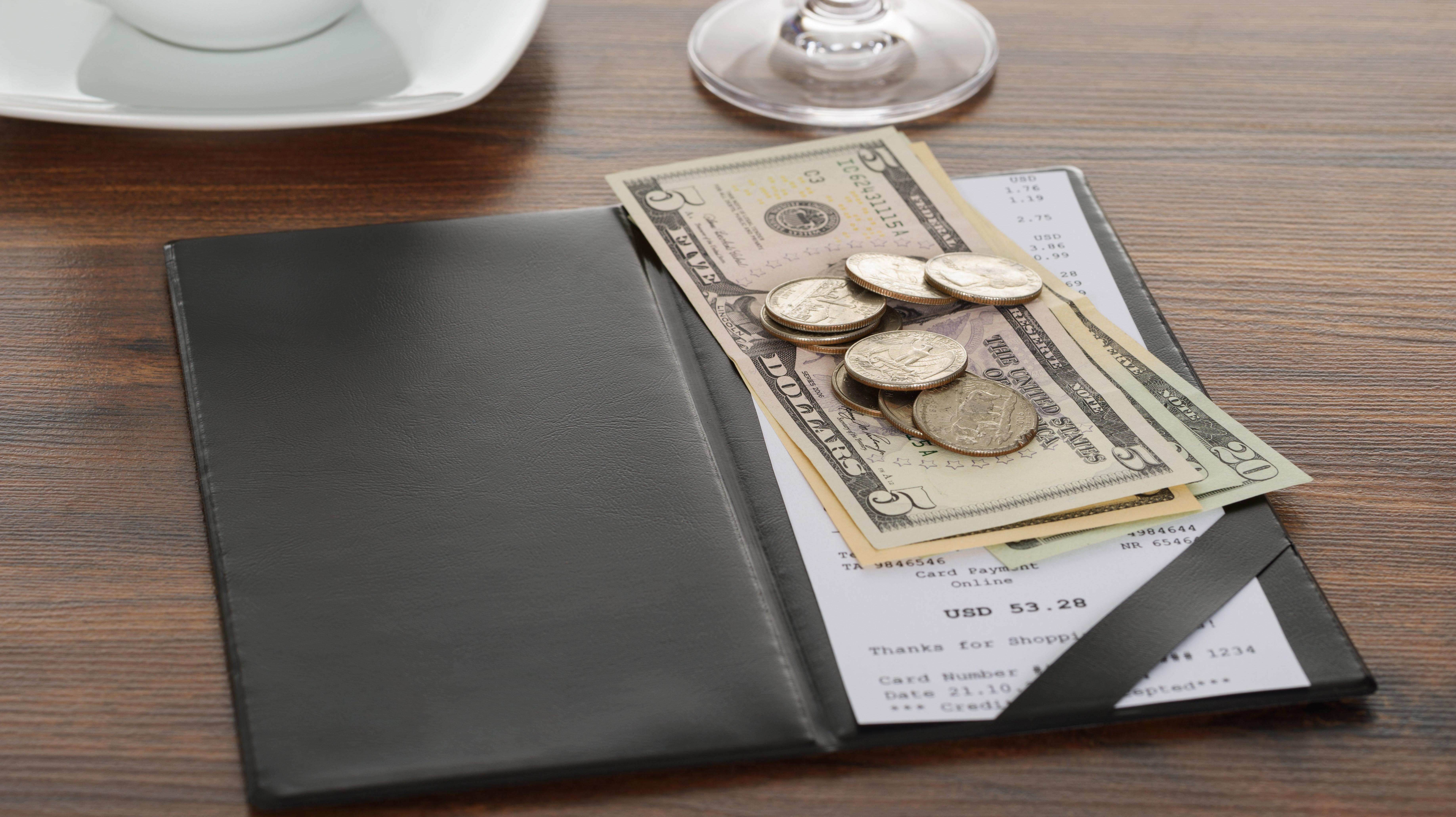The Most Common Fees You'll See On A Restaurant Bill (And What They Mean)
There's a reason for every add-on you might see on your dinner bill.
Dining out isn't cheap. There's a reason that certain restaurants are reserved for special occasions or why sit-down dining in a restaurant isn't a daily practice for most. Before enjoying a meal out in the world, it's important to take stock of your budget and be prepared for the amount you will be spending to avoid any surprises or fear that you'll be asked to wash the dishes to cover your tab (don't fret, no one would ever actually ask you to do that). So, remember to take into consideration these common add-on fees, and don't you dare complain if any of these show up on your dinner bill.
What are typical fees tacked onto restaurant bills?
- Automatic gratuity. At most restaurants, parties of 8 or more are slapped with an automatic 18% gratuity on the bill. This is one to look out for simply so that you don't unnecessarily tack on an additional 20% if that's beyond what you were budgeting (though we'll always advocate for tipping as much as possible). Instead, you can take note of the percentage of gratuity and tack on extra money to make sure your server gets a full 20% (or more). In any case, never complain about this fee; a server's hourly wage is not what sustains them, and gratuity should be a necessity every time you dine out anyway, whether it's listed right on the bill or not.
- Corkage fee. If you're bringing your own bottle of wine to a BYOB restaurant, you'll likely see a corkage fee added onto your bill. This is to cover the service involved—even when BYO wine isn't purchased from the restaurant, a server is still likely the one opening the bottle, keeping it chilled if necessary, and refilling your glasses as you enjoy your meal. According to On the Line, corkage fees can be anywhere from $5 to $100 depending on the establishment, so check ahead of time to see if it's worth it. Otherwise you might find yourself spending $20 to drink a $7.99 bottle of rosé you could have enjoyed just as well at home.
- Cakeage fee. Yes, this is a play on "corkage fee." If it's someone's birthday and you want to bring a cake from home to celebrate in the restaurant, be prepared to pay. Introduced as a way to combat guests bringing outside desserts, this fee has been known to be as high as $25 (though that particular case was highly criticized). Most recently I spotted the fee on the menu of an Italian restaurant as $1.50 per person. If this fee irks you, it's easy to avoid. Just don't bring in a cake, and you won't have to worry.
- Service surcharge. This type of ambiguously named fee has been popping up more and more over the last two years as a way to support employees throughout the pandemic. Sometimes called the "COVID surcharge," these show up in the 5% range and in most cases the charge can be removed if you ask. But before you bother anyone about it, keep in mind that the money goes toward protective equipment for staff, cleaning supplies, and even health insurance for employees. It's worth it to just leave it on there and support restaurant industry workers the best we can.
- Split plate fee. You and your date decide to split an entree, and tell the server such. It comes out on two separate plates (convenient!) but then you notice a $5 fee at the end of your meal. Read the fine print on a menu to see if the restaurant charges for splitting to avoid any surprises. Better yet, simply choose to share something and don't mention it to your server—you likely won't get charged for picking off each others' plates.
The key is to always double-check a menu—or call ahead!—for any mention of added fees to help make decisions throughout the meal and avoid sticker shock when the check comes. And as always, remember to tip even on top of added fees! Every little bit helps restaurant workers make ends meet.
